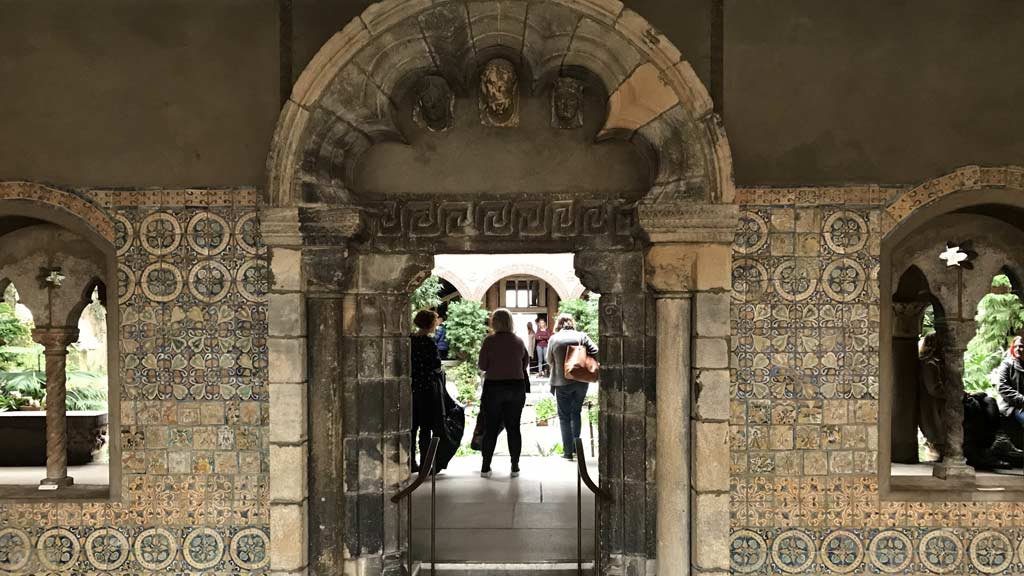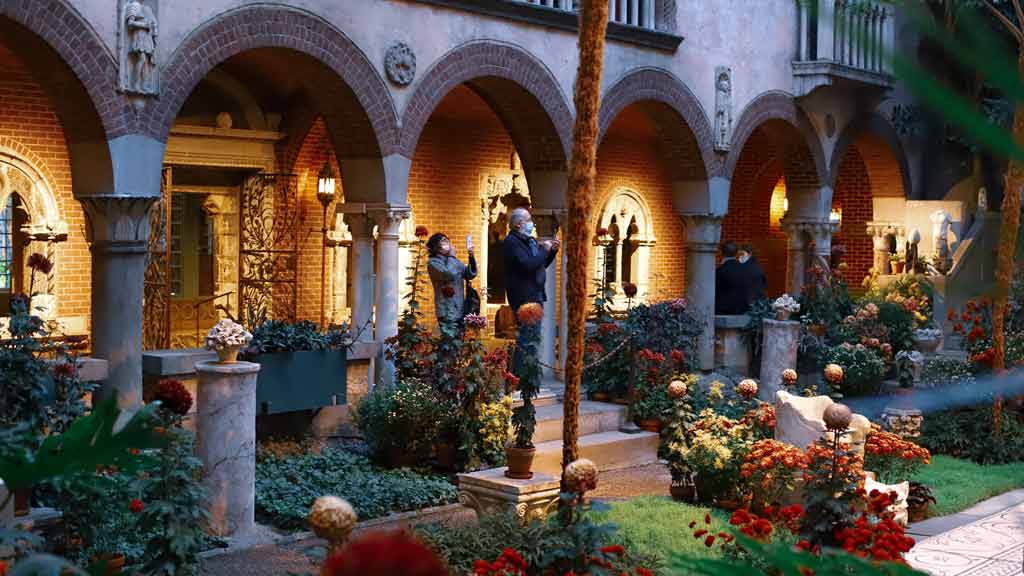Nestled in Boston, Massachusetts, the Isabella Stewart Gardner Museum stands as a testament to the boundless passion and artistic vision of its founder, Isabella Stewart Gardner.
Established in 1903, this cultural gem beckons visitors into a world where art, history, and architecture intertwine seamlessly.
The museum’s story is one of remarkable ambition and creativity, with Isabella’s dream of creating a haven for art lovers coming to fruition through her dedication and tireless efforts.
The museum’s stunning Venetian-inspired architecture, lush courtyard, and eclectic collection captivate visitors from around the globe.
From ancient artifacts to Renaissance masterpieces to contemporary works, the Gardner Museum offers a journey through time and culture, inviting exploration and discovery at every turn.
With its rich history and enduring legacy, the Isabella Stewart Gardner Museum continues to inspire and enchant generations of art enthusiasts and curious minds alike.
Isabella Stewart Gardner Museum
The Isabella Stewart Gardner Museum, nestled in the heart of Boston, Massachusetts, stands as a testament to the vision and passion of its founder, Isabella Stewart Gardner.
This cultural gem, often referred to simply as the Gardner Museum, is renowned for its eclectic collection, stunning architecture, and unique atmosphere.
Since its opening to the public in 1903, it has enchanted visitors with its blend of art, history, and ambiance.
History and Founding

The museum’s story begins with Isabella Stewart Gardner, a remarkable woman with a fervent love for art and culture. Born in 1840, Isabella possessed an insatiable curiosity and an unwavering determination to pursue her passions.
In 1860, she married John Lowell Gardner Jr., a prominent Bostonian, and together they embarked on a journey that would ultimately lead to the creation of the museum.
Isabella’s dream of establishing a museum was realized after the death of her father-in-law, who left her a substantial inheritance.
With this newfound wealth, she set out to build a home for her growing collection of art and artifacts. Collaborating with architect Willard T. Sears, Isabella designed a Venetian-inspired palazzo that would serve as both her residence and a museum.
Architecture

The architecture of the Isabella Stewart Gardner Museum is as captivating as the art within its walls. Modeled after a 15th-century Venetian palazzo, the building features a distinctive facade adorned with arches, columns, and intricate detailing.
A lush courtyard, reminiscent of a European garden, lies at the center of the museum, providing a serene retreat for visitors.
One of the most iconic spaces within the museum is the Venetian-style courtyard, complete with a central fountain, lush greenery, and balconies adorned with vivid flowers. This tranquil oasis offers visitors a moment of respite amidst the bustling city.
Collection
The Isabella Stewart Gardner Museum is home to a diverse collection of art spanning various cultures, periods, and mediums.
Isabella’s eclectic taste is evident in the museum’s galleries, which showcase everything from ancient artifacts to Renaissance masterpieces to contemporary works.
Among the highlights of the collection are pieces by renowned artists such as Titian, Rembrandt, and John Singer Sargent. Notable works include Titian’s “Europa,” Rembrandt’s “Self-Portrait,” and Sargent’s “El Jaleo.”
Each artwork is displayed in carefully curated galleries, preserving Isabella’s vision of creating a space where art could be experienced intimately.
The Gardner Heist

The Isabella Stewart Gardner Museum gained infamy in 1990 when it became the site of one of the largest art heists in history.
In the early hours of March 18th, two thieves disguised as police officers entered the museum and stole thirteen works of art, including pieces by Vermeer, Rembrandt, and Degas.
To this day, the stolen artworks remain missing, and the case remains unsolved, despite ongoing efforts by law enforcement and the museum to recover the stolen pieces.
Legacy and Impact
Despite the notorious heist, the Isabella Stewart Gardner Museum continues to thrive as a cultural institution and a beloved destination for art lovers worldwide.
Isabella Stewart Gardner’s legacy lives on through the museum’s enduring commitment to preserving and sharing her remarkable collection with future generations.
Today, the museum remains a beacon of creativity, inspiration, and beauty in the heart of Boston, inviting visitors to explore the intersection of art, history, and culture.
Preservation Project
The Isabella Stewart Gardner Museum Preservation Project is a crucial endeavor aimed at safeguarding the museum’s historic building and priceless collection for future generations.
Initiated to address structural issues and enhance security measures following the 1990 theft, the project involves meticulous restoration work and the implementation of advanced conservation techniques.
Through this undertaking, the museum ensures that Isabella Stewart Gardner’s legacy endures, providing visitors with an immersive and secure environment to appreciate art and history.
This ongoing commitment to preservation not only protects the museum’s treasures but also reinforces its role as a cultural beacon in the heart of Boston.
FAQs
What is the Isabella Stewart Gardner Museum?
The Isabella Stewart Gardner Museum is a renowned cultural institution located in Boston, Massachusetts.
Who was Isabella Stewart Gardner?
Isabella Stewart Gardner was the museum’s founder, a visionary art collector, and philanthropist.
Born in 1840, she amassed an impressive collection of artworks and artifacts during her lifetime, eventually establishing the museum to house her treasures.
What can visitors expect to see at the museum?
Visitors to the Isabella Stewart Gardner Museum can expect to see a wide range of artworks, including paintings, sculptures, tapestries, and decorative arts.
Highlights of the collection include pieces by renowned artists such as Titian, Rembrandt, and John Singer Sargent.
What is the significance of the museum’s architecture?
The museum’s architecture is modeled after a 15th-century Venetian palazzo, complete with a lush courtyard, ornate balconies, and intricate detailing.
It provides a stunning backdrop for the artworks and adds to the museum’s unique charm and ambiance.
What is the story behind the Gardner Heist?
The Gardner Heist refers to a notorious art theft that took place at the museum in 1990. Two thieves disguised as police officers stole thirteen artworks, including pieces by Vermeer, Rembrandt, and Degas.
Despite extensive efforts, the stolen artworks remain missing, making it one of the most significant unsolved art crimes in history.
Wrap Up
The Isabella Stewart Gardner Museum stands as a beacon of artistic excellence, cultural significance, and enduring legacy.
Through its eclectic collection, captivating architecture, and rich history, the museum has solidified its place as a beloved destination for art lovers and scholars alike.
Despite the challenges it has faced, including the infamous 1990 heist that captured global attention, the Gardner Museum continues to thrive, steadfast in its mission to preserve, inspire, and educate.
Isabella Stewart Gardner’s vision lives on through the museum’s vivid exhibitions, educational programs, and commitment to fostering creativity and appreciation for the arts.
As visitors wander through its halls, they are transported to a world where beauty, history, and imagination converge, leaving an indelible impression that resonates long after they depart.
In its timeless elegance, the Isabella Stewart Gardner Museum serves as a testament to the enduring power of art to unite, inspire, and transform lives.
Bob Potenza